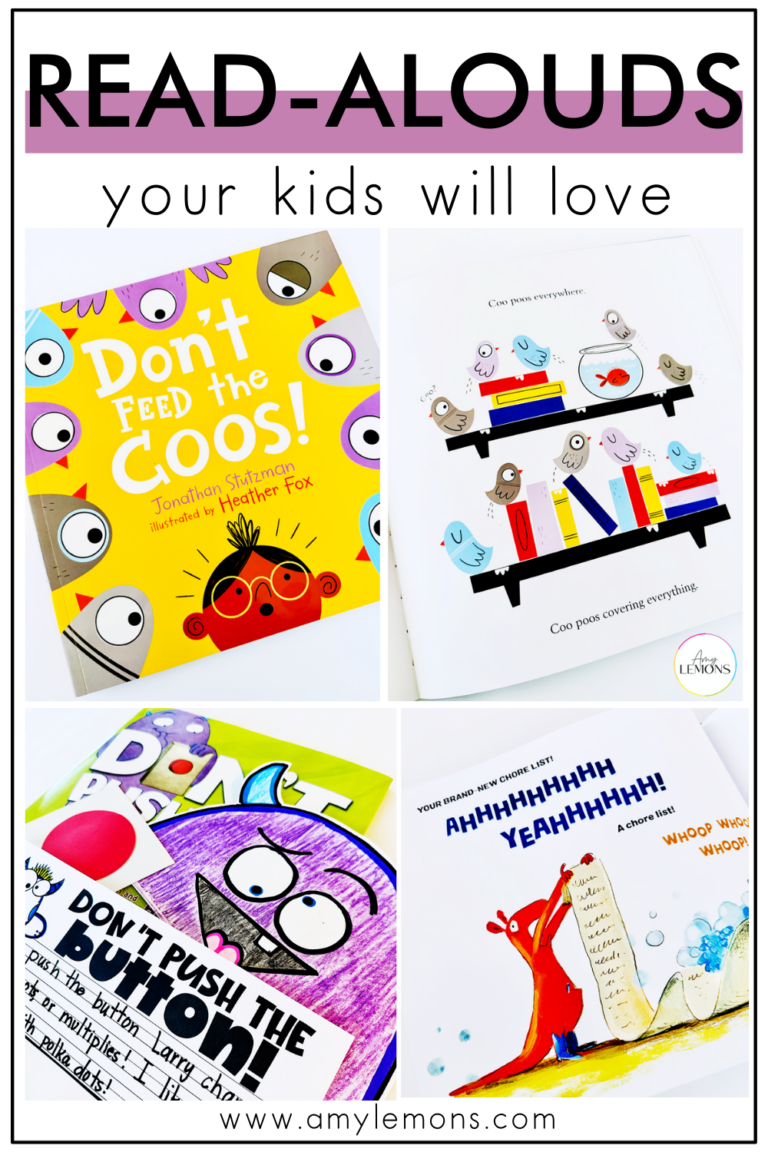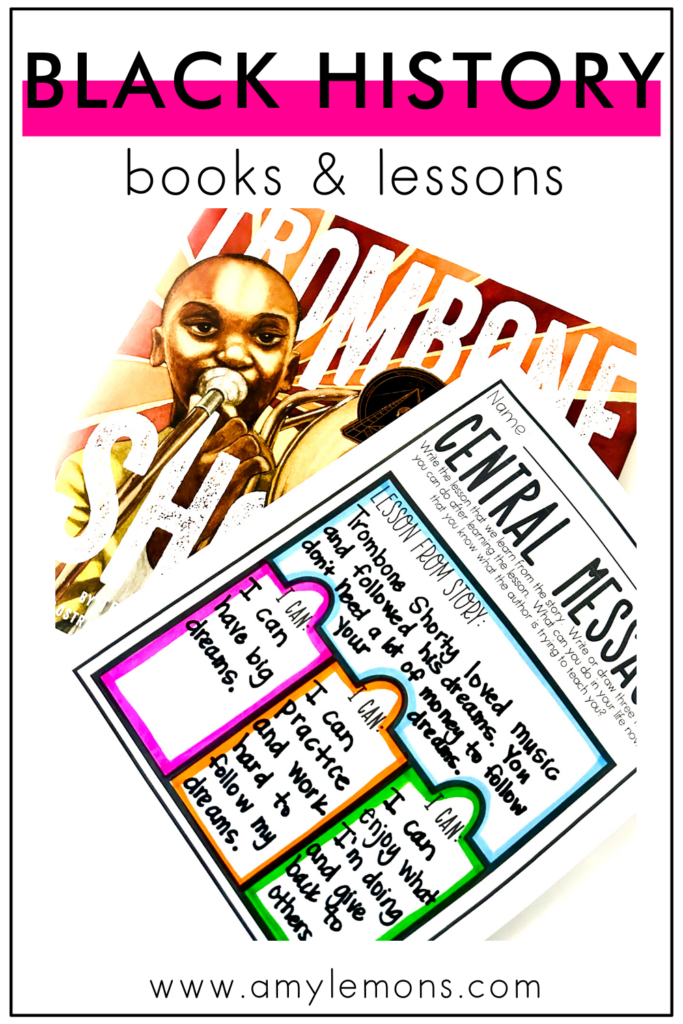
While we strive to celebrate Black history always, Black History Month is a great time to highlight inspiring Black figures who don’t often receive the level of acknowledgment as their more popular counterparts. An easy way to explore Black History Month for kids is to incorporate lesson plans on Black figures that help highlight their legacy while teaching essential reading comprehension skills.
It doesn’t have to be one or the other, or all or nothing, instead, you can simply begin to incorporate diverse biographical reads that work well for the reading components you need to teach during February, and throughout the rest of the year too!
To give you an idea, I have three Black History Month lesson ideas that feature 3 inspiring figures students may not have learned about yet, must-read books about their lives, and engaging activities.
{Disclaimer: Affiliate links have been used throughout this post, but I only share books I use and enjoy!}
Not only was Marian Anderson an incredible singer, but her powerful voice led to the breaking down of barriers. Particularly, her most famous performance in 1939 when she sang on the steps of the Lincoln Memorial in Washington, D.C., after being denied the opportunity to perform at a segregated venue.
Born in 1897 in Philadelphia, Pennsylvania, Marian faced discrimination throughout her life due to her race. But she remained determined in her pursuit of becoming a singer and continued to persevere. She eventually became the first African American to perform at the Metropolitan Opera in New York City in 1955.
Her story is portrayed perfectly in the book When Marian Sang. The story has rich language and elaborate illustrations. It also has unique elements that make it perfect for teaching narrative nonfiction and making inferences, while teaching lessons of courage.
Narrative nonfiction books are an engaging source for relaying information about historical figures. They differ from traditional textbooks because they weave historical facts into compelling narratives.
The authors use vivid descriptions, character development, and storytelling techniques to appeal to readers. This allows the reader to connect to the personal experiences and struggles of the individuals. This also keeps students engaged.
You’ll notice this in the picture book for Marian Anderson. As it is a narrative nonfiction book, important dates or events are not organized through a timeline. Instead, students can focus on the comprehension skill of retelling key events.
It is very similar to retelling a story but we’re highlighting the important events in a person’s life.
As students are reading, they can begin making inferences. In a story like When Marian Sang, many biographical references help students understand more about the character.
For example, in the story, It is suggested that Marian’s father played a significant role in shaping her life. By examining various facets of Marian’s experiences, students can find evidence to support this inference.
Trombone Shorty, whose real name is Troy Andrews, is a talented musician known for his skills using the trombone and trumpet. Andrews was born and raised in New Orleans, Louisiana, in 1986, where he was surrounded by the vibrant sounds of jazz music.
This influence led to him playing music at a young age alongside his family. As a small child, Andrews would be seen playing the trombone, thus earning him the nickname “Trombone Shorty”. In his namesake book, Trombone Shorty, he details his rise to becoming a world-renowned musician with a unique style.
His story serves as an inspiration for kids everywhere, showing them that with dedication and passion, they can achieve their dreams. In addition, this picture book is a great companion for teaching students about autobiographies and central messages.
Trombone Shorty is a unique book because it was written by Trombone Shorty himself! The result is a beautiful picture book that embodies the qualities of a great autobiography.
As students learn about Trombone Shorty, they will also learn about what makes a book an autobiography and use the impactful events of his life to practice making timeline notes.
In Trombone Shorty readers are invited into Troy Andrews’ world as he shares his journey from a young boy in New Orleans to an accomplished musician. Readers will notice the vibrant illustrations and rhythmic storytelling, but they will also learn a valuable lesson of perseverance and determination.
Trombone Shorty emphasizes the importance of pursuing your dreams while overcoming challenges. Students can then apply that lesson to their lives as they are dreaming big dreams and reaching for the stars!
Dr. Patricia Bath’s legacy should not go unnoticed. Bath was a groundbreaking ophthalmologist and inventor who notably became the first African American woman to complete a residency in ophthalmology and to chair an ophthalmology residency program in the United States.
But that was not without struggle. Born in Harlem, New York, in 1942, Dr. Bath faced discrimination and barriers to her education because of her race and gender.
However, she persevered, eventually creating the Laserphaco Probe, a device used for cataract surgery that improved accuracy and reduced recovery time. Her invention has helped restore sight to countless people around the world.
Due to the intricate world of medicine explored through the book A Doctor with an Eye for Eyes, students will have no trouble learning how to ask questions while reading.
Asking questions while reading a nonfiction text is essential for deepening understanding and engaging with the material. By asking questions, students can interact with the text while also exploring the subject matter more deeply.
Instead of reading through a text quickly and glossing over an important subject, students actively process and internalize the material by asking questions.
Dr. Bath has an incredible story of not only overcoming challenges but also making an incredible impact on our world. Engage students in asking questions about Dr. Bath as you are reading through her biography.
We can continue the skill of asking and answering questions while also learning more information on a topic. Dr. Bath’s work will no doubt inspire students’ curiosity about the eyes.
We can bring in informational text about our eyes and how they function to expand on how important the contributions were that she made to the field of ophthalmology. This leads to more questions and answers.
Reading two texts on the same topic will allow students to be more informed learners and expand their ability to ask questions.
Biographical picture books and lessons offer an ideal opportunity to introduce new elements that students may not be aware of.
For example, as students are learning from the book When Marian Sang, we introduce a separate passage that dives deeper into the history of the Metropolitan Opera where Marian became the First African American to perform.
As another example, we can complement the book Trombone Shorty with informational texts on instruments, specifically brass wind instruments like the trombone that made him famous.
Making these connections makes it possible to deepen understanding of not only the reading comprehension skills but also the impact made by these Black figures.
For additional Black History Month books for kids, check out a list of some of my favorite Black History picture books. Or check out a list of some of my favorite black authors and illustrators.


Hey, y’all! My name is Amy Lemons and I am passionate about providing students with both engaging and effective standards-based Math and ELA lessons.

Sample a day of Rooted in Reading with these lesson plans and activities for Reading Comprehension, Vocabulary, and Grammar!